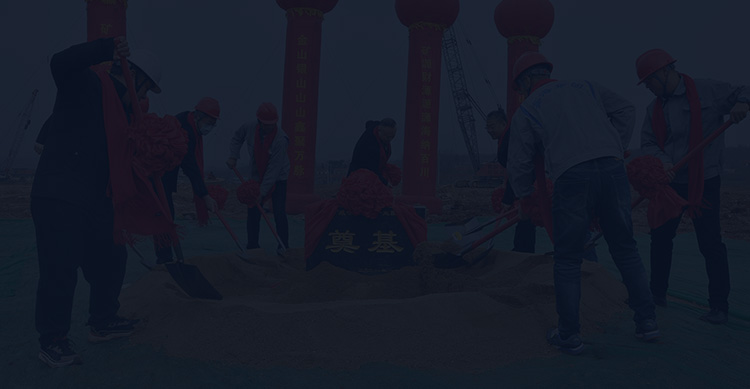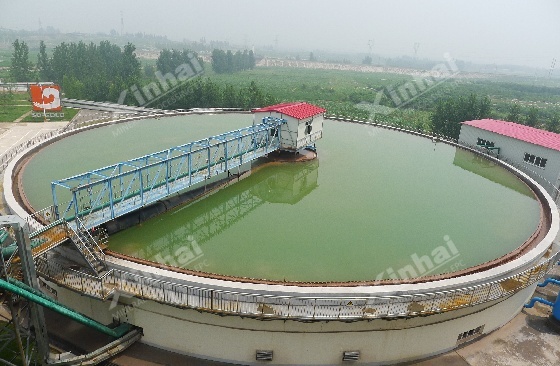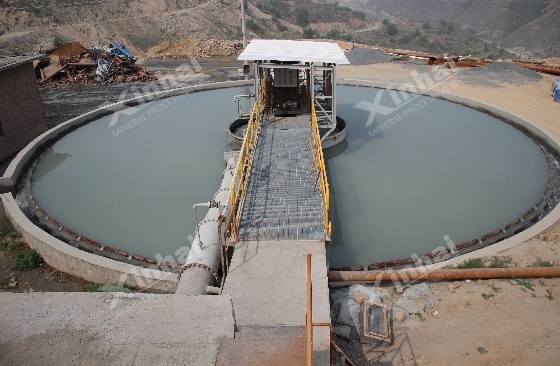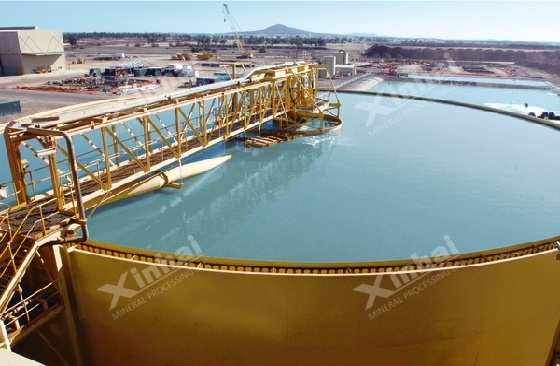
With increasing environmental pressure, tailings processing has become a challenge that mineral processing plants must address. However, traditional thickeners face issues such as high energy consumption, low efficiency, and high operating costs. The application of high-rate thickeners offers a promising solution to these problems. Through technological innovation, they have achieved the dual goals of improving efficiency and reducing costs.
1. Efficient Settling Design
The high-rate thickener adopts inclined plate settling, reducing the settling path from 3 meters to 0.5 meters and significantly shortening the particle settling time.
It features a high-rate flocculation system, which combines a pipeline mixer with ultrasonic dispersion technology to greatly improve flocculant utilization.
The bottom of the thickener is designed with a deep cone or high-pressure rake structure, enhancing the compression of the settled sludge.
As a result, the underflow concentration increases to 50%–70%, reducing the cost of subsequent filtration or dry stacking.

2. Intelligent Control System
The high-rate thickener is equipped with a real-time monitoring and feedback system that continuously adjusts operating parameters via density meters, turbidity meters, torque sensors, and other instruments.
This reduces manual intervention and helps prevent efficiency losses caused by improper operation.
AI algorithms enable predictive maintenance and dynamic optimization of the settling model, adjusting the frequency and dosage of flocculants based on historical data.
With intelligent control, the high-rate thickener can achieve long-term stable operation and reduce the failure rate by up to 50%.
3. Modular Installation, Fast Production
The high-rate thickener adopts a modular installation design, featuring prefabricated components such as the tank, drive frame, and control system. On-site work only requires assembly and commissioning.
Customized foundation solutions are provided based on different ground conditions to reduce construction complexity.
Compared with traditional thickener installation, it can be commissioned and put into operation approximately 50 days earlier.
4. Large-scale Design
The large-diameter deep cone design is adopted, with diameters ranging from 30 to 100 meters, increasing the settling area by 3 to 10 times.
By enhancing the processing capacity of a single unit and reducing the number of required units, a single Φ60m thickener can handle up to 5,000 t/h, meeting the production needs of a mine with an annual output of 10 million tons and avoiding the coordination issues associated with operating multiple units in parallel.

1. Energy Saving and Consumption Reduction
The high-rate thickener adopts low-torque drive technology, featuring a lightweight rake frame and a variable frequency motor, reducing drive power by 30%–50%.
For example, a 30-meter diameter thickener, motor power is reduced from 55 kW to 35 kW, significantly lowering electricity costs.
In addition, the high-rate settling design achieves overflow water with SS < 50 mg/L, which can be directly reused for mineral processing, reducing fresh water consumption through recycling.
2. Reduced Maintenance Costs
The high-rate thickener features a wear-resistant and corrosion-resistant design, including rubber linings with a service life of 8–10 years. The rake teeth are made of tungsten carbide, reducing the wear rate by 70% and significantly lowering maintenance frequency.
IoT sensors monitor bearing vibrations and lubricant conditions in real time, enabling predictive maintenance and cutting maintenance costs by 40%.
3. Reduced Chemical Usage Costs
An intelligent dosing system combined with efficient mixing technology is adopted. The dosing system uses an online particle size analyzer to adjust the type and dosage of reagents, saving 20% on reagent consumption and lowering chemical investment costs.
The efficient mixing technology uses a static mixer to replace traditional agitation tanks, increasing reagent utilization to 95%.
1. Copper Tailings Processing Project Case
A porphyry copper mine in Chile produces 500,000 tons of copper concentrate annually and processes 1,200 t/d of tailings. The original system used four φ30m traditional thickeners, which had a low return rate, a single flocculant consumption of 200g/t, and large fluctuations in underflow concentration, affecting the efficiency of subsequent filter pressing.
To improve the efficiency of copper tailings processing and reduce investment costs, the concentrator replaced the traditional thickeners with a φ45m high-rate thickener equipped with an intelligent control system. After the replacement, the processing capacity increased by 30%, the return rate improved by 25%, the flocculant consumption decreased by 45%, and the annual electricity cost was reduced by $160,000.

2. Iron Tailings Dry Stacking Project Case
A magnetite mine in Anshan, China, with a tailings volume of 8,000 t/d, originally used a traditional thickener and tailings pond wet discharge process. However, the tailings pond was near full capacity, the cost of land acquisition for a new pond was high, and transportation costs for the tailings were also significant.
To reduce project costs, the tailings discharge method was changed to dry discharge. The new process:hydrocyclone → high-rate thickener → deep cone thickener → plate and frame filter press → dry yard. As a result, the moisture content of the tailings was reduced by 53%, transportation costs were lowered by 40%, and the energy consumption per ton of processed material was reduced by 27%.
The application of high-rate thickeners not only improves the efficiency of tailings processing but also significantly reduces processing costs. It is a powerful tool for ore dressing plants looking to enhance efficiency and lower costs. If your ore dressing plant is facing similar challenges of low efficiency and high costs, please contact us. We will tailor a dedicated solution for you.
To find out more about our products and solutions, please fill out the form below and one of our experts will get back to you shortly.